How Is Molybdenum Mined and Processed?

Molybdenum is a silver-white metal with an atomic number of 42, a density of 10.2 g / cm³, a melting point of 2610 ° C, and a boiling point of 5560 ° C. Molybdenum mining and processing technology have been improving since 1916, when Climax molybdenum was first mined near Leadville, Colo. In this article, we will talk about how is molybdenum mined and processed.
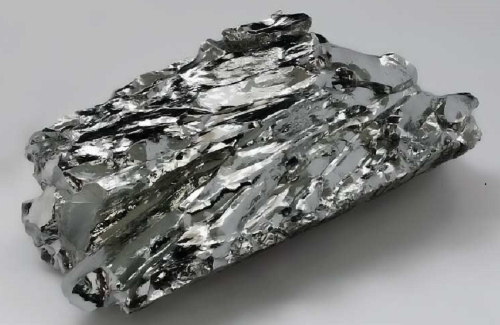
Distribution of Molybdenum Mines
At present, the main molybdenum mines in the world are distributed in the countries near the American continental divide, such as Canada, the United States, Mexico, Peru, Chile, China, and the CIS (Commonwealth of Independent States) countries.
In 2008, the reserves were based on 19 million tons of molybdenum, according to the U.S. Geological Survey. China had the largest reserves, followed by the U.S. and Chile. Many molybdenum mines are among the most productive in the world, the largest of which can transport more than 50,000 tons of ore a day.
Types of Molybdenum Ores
Molybdenum exists in many minerals, but only molybdenite (MoS2) is suitable for the industrial production of molybdenum products. Molybdenite may be the only mineralized mineral in a single ore body, but it usually co-exists with other metals, especially copper sulfide minerals. The molybdenum content of each ore body is between 0.01 and 0.25%.
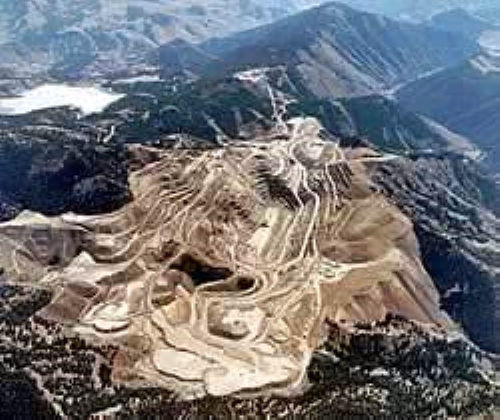
Thompson Creek molybdenum ore
Based on the minerals contained in ore bodies and their quality, molybdenum ore is divided into three categories: primary ore, the molybdenite recovery is the only goal; by-product ore, in which the recovery of copper ore is the main target, molybdenum recovery provides additional economic value; symbiotic product ore, the commercial viability of the mine requires that both molybdenite and copper-bearing minerals be recovered.
If the ore is near the surface, open-pit mining technology is used to dig overburden to expose the ore body for easy mining. If the ore is located deep underground, underground block caving technology is adopted. Large pieces of ore are cut from the bottom and collapse under their own weight, and the resulting ore is transferred to the ground for processing.
Molybdenum Processing
1. Grinding
A grinding machine crushes rock the size of footballs to the size of gravel, then uses a ball mill to further reduce the material to the size of cosmetic powder.
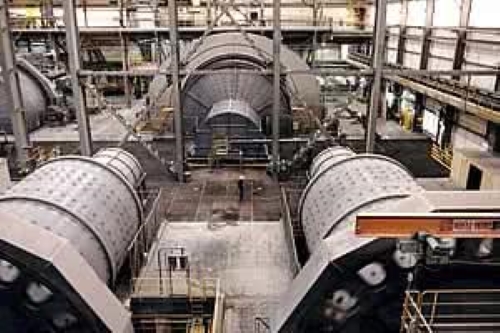
Thompson Creek molybdenum ore
2. Flotation
In the flotation process, the ground ore/gangue powder is mixed with a liquid reagent and inflated. Lower-density ores rise in the foam and are collected, while useless gangue sinks and is discarded. In this way, flotation separates the metallic minerals from the useless gangue or molybdenite from copper sulfide in the case of copper/molybdenum.
The resulting MoS2 concentrate contains between 85% and 92% MoS2. If necessary, acid leaching can be used to further dissolve impurities such as copper and lead.
3. Calcination
MoS2 concentrate is roasted in the air at a temperature of 500-650℃ and converted into molybdenum calcined sand (MoO3) (also known as industrial molybdenum trioxide). The chemical reactions are as follows:
2MoS2 + 7O2 → 2MoO3 + 4SO2 MoS2 + 6MoO3 → 7MoO2 + 2SO2 2MoO2 + O2 → 2MoO3
The calcining is done in a multi-chamber furnace, in which molybdenum concentrate is added from the top of the furnace, moving in the opposite direction to the gas blown in from the bottom, and the airflow is heated. The large rotary rake arm constantly turns the sparry molybdenum concentrate to promote the chemical reaction, and the emission of baking furnace gas is removed by a desulfurization system or lime washing device to remove sulfur dioxide.
The obtained industrial molybdenum oxide usually contains at least 57% molybdenum and less than 0.1% sulfur. About 40-50% of molybdenum is used in this form, mainly as an alloying element in steelmaking.
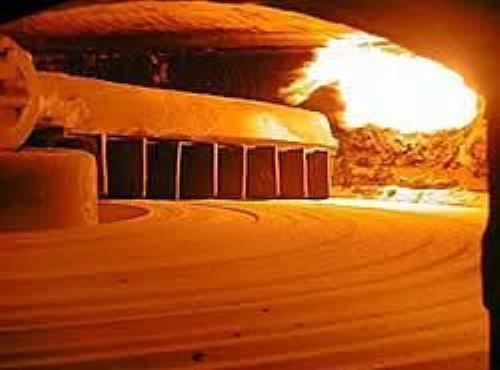
Calcination
Related Processing
--Rhenium Recovery
Some molybdenite concentrates, a by-product of copper ore, contain small amounts of rhenium (< 0.10%). The recovery of rhenium by molybdenum roaster is one of the main industrial sources of this rare metal.
--Molybdenum Iron Smelting
About 30-40% of the industrial molybdenum oxide is processed into ferromolybdenum (FeMo). Mixed industrial molybdenum oxide with iron oxide, reduced with ferrosilicon and aluminum, aluminum thermal reaction, resulting in the production of iron-molybdenum ingots weighing hundreds of kilograms.
It contains 60-75% molybdenum and the rest is mostly iron. After air cooling, the ingots are crushed and sifted to obtain FeMo of the desired size range.
Upgrading Of Industrial Molybdenum Oxide Processing
About 25% of the world's production of molybdenum baking is processed into various molybdenum chemicals. Pure molybdenum trioxide (MoO3) is produced by the sublimation method, or various pure molybdenum chemicals (mainly molybdenum trioxide and molybdate) are produced by the chemical wet process.
Molybdenum calcined sand is dissolved in an alkaline medium (ammonium hydroxide or sodium hydroxide) and impurities are removed by precipitation and filtration and/or solvent extraction. The obtained ammonium molybdate solution is converted into any molybdate product by crystallization or acid precipitation, which can be further processed into pure molybdenum trioxide by calcining.
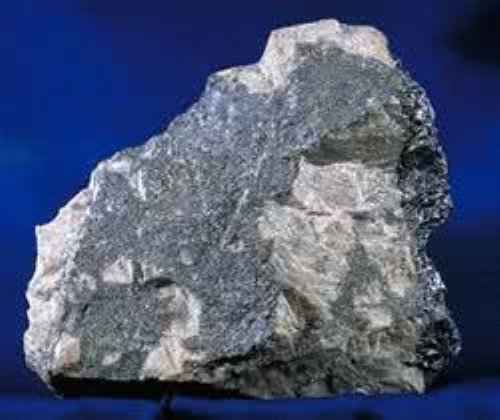
Molybdenum ore
Production of Molybdenum Metal
Molybdenum is produced by reducing pure molybdenum trioxide or ammonium molybdate in hydrogen.
The chemical reduction of pure molybdenum trioxide or ammonium molybdate to metal requires two stages because direct conversion to metal releases heat, which inhibits the process. The first stage was reduced to MoO2 in the range of 450-650℃; in the second stage of the reduction reaction, molybdenum dioxide is reduced to molybdenum metal in the temperature range of 1000-1100℃.
Historically, both stages have been completed by pushing a small boat containing the reaction powder into a flowing hydrogen atmosphere in a tube furnace. At present, in the first stage of reduction operation, the rotating furnace is becoming more and more common, in which powder is fed continuously through a rotating inclined tube in a flowing hydrogen atmosphere, thus improving production efficiency.
Conclusion
Thank you for reading our article and we hope it can help you to have a better understanding of how is molybdenum mined and processed. If you want to know more about molybdenum and other high-quality refractory metals, you can visit Advanced Refractory Metals (ARM) for more information.
{{item.content}}
LEVE A REPLY
{{item.children[0].content}}
{{item.content}}






